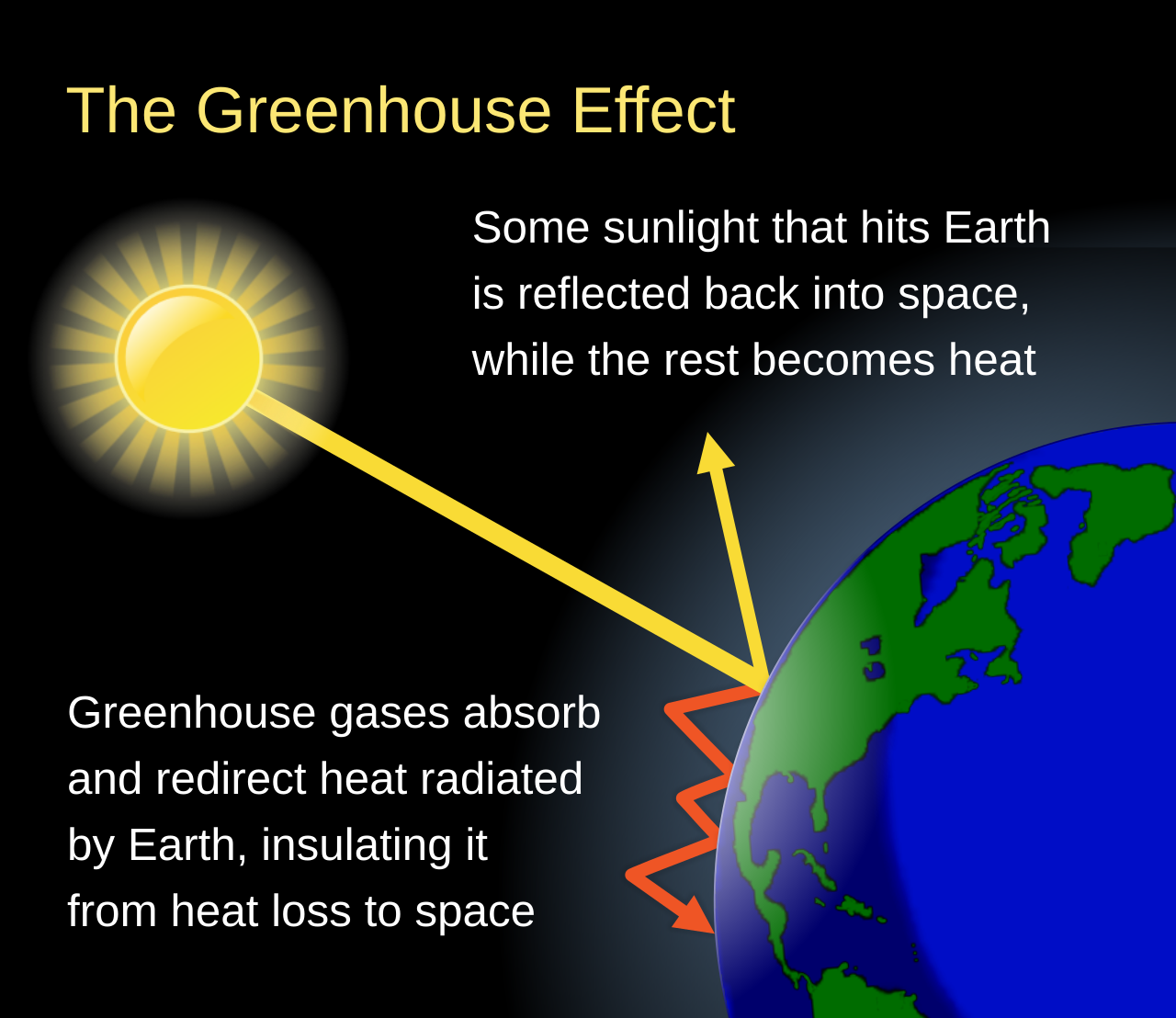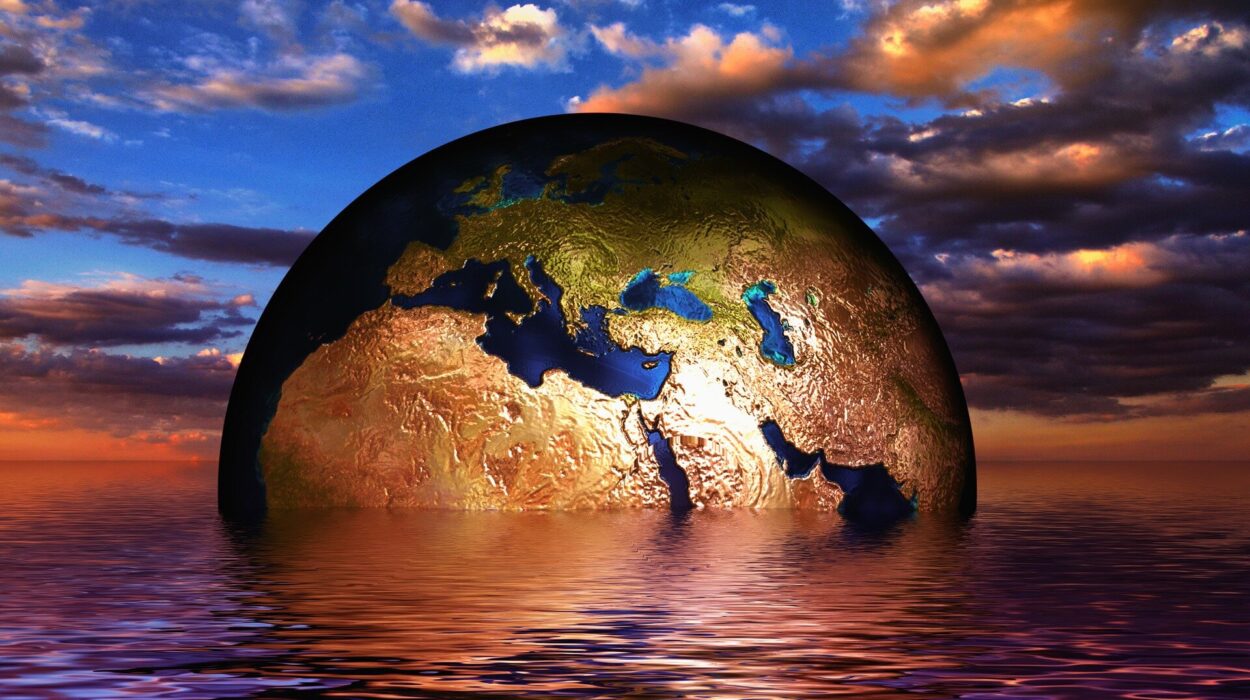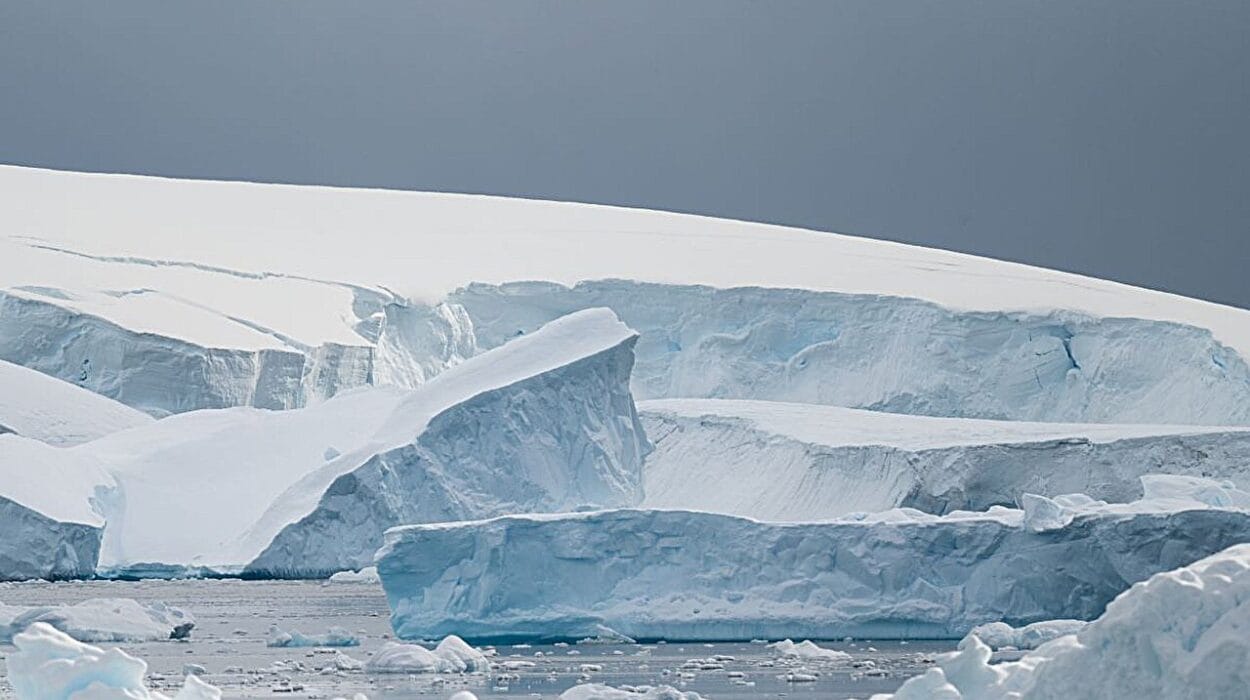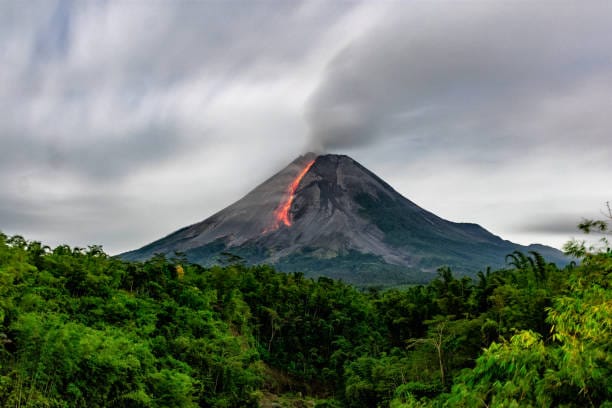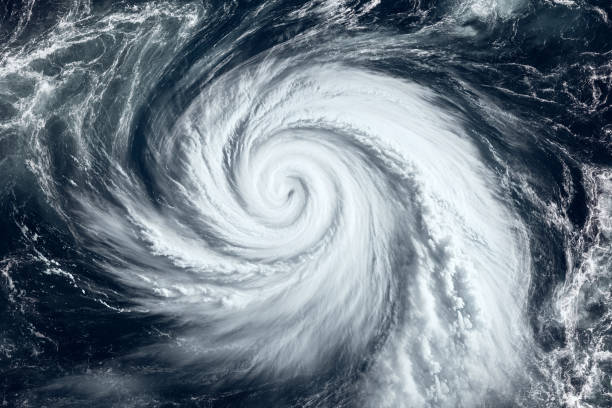On a pale blue planet, swirled with clouds and wrapped in oceans, life breathes through an invisible dance of gases. Earth, delicate and powerful, spins through the cold vacuum of space, warmed not by proximity to the sun alone, but by a wondrous, unseen mechanism known as the greenhouse effect. Without it, the world as we know it would freeze into lifeless silence. With too much of it, our planet begins to burn.
The greenhouse effect is not just a scientific phenomenon—it is the pulse of the planet, a balancing act written into the very fabric of our atmosphere. For billions of years, this natural system has regulated Earth’s climate with astonishing precision, nurturing forests, fueling rain, and maintaining the temperatures that allow life to thrive. But in recent centuries, humanity has begun to tamper with this balance, altering the atmospheric symphony in ways that echo across oceans, mountains, and skies.
To understand how the greenhouse effect impacts Earth’s climate is to peer into the engine room of life itself. It is a story of sunlight and shadow, of ancient carbon and modern combustion, of the thin line that separates survival from catastrophe.
A Dance of Light and Heat
The story begins 150 million kilometers away, at the center of our solar system. The sun, a blazing sphere of nuclear fusion, hurls energy across the void, showering Earth with light. This sunlight carries with it the power to warm oceans, stir winds, and awaken the green bloom of spring.
When sunlight reaches Earth’s surface, some of it is absorbed, warming land and water. The Earth then emits this energy back into space as infrared radiation—heat. But this outgoing heat doesn’t all escape freely. Instead, certain gases in the atmosphere trap some of this infrared radiation, re-radiating it back toward the surface and warming the planet further. These gases—carbon dioxide (CO₂), methane (CH₄), water vapor (H₂O), nitrous oxide (N₂O), and others—act like the glass of a greenhouse, allowing sunlight in but preventing heat from escaping too quickly.
This is the greenhouse effect. It is essential. Without it, Earth’s average temperature would be around -18°C (0°F), and the planet would be a frozen wasteland. Instead, thanks to this gentle cocoon of gases, our global average hovers around a comfortable 15°C (59°F).
This natural mechanism has made Earth uniquely habitable. Mars, with too thin an atmosphere, lacks a meaningful greenhouse effect and remains icy. Venus, with a runaway greenhouse effect, is a scorching inferno. Earth has long been the goldilocks planet—not too hot, not too cold. But this delicate balance is now under threat.
The Carbon Footprint of Civilization
For much of human history, our impact on the atmosphere was negligible. We lit fires, grew crops, built homes—but the atmosphere absorbed our activities with little consequence. That changed with the dawn of the Industrial Revolution in the late 18th century. As coal-fired engines and steam-powered factories began to hum, carbon that had been buried underground for millions of years in the form of fossil fuels began to rise into the air.
At first, the increase in CO₂ levels seemed modest. But by the 20th century, the burning of coal, oil, and natural gas had become a defining feature of modern civilization. Every car ride, every airplane flight, every factory whistle added more greenhouse gases to the sky. Deforestation—the clearing of forests for agriculture and development—compounded the problem by reducing the Earth’s capacity to absorb CO₂.
Today, atmospheric carbon dioxide levels have soared past 420 parts per million, higher than at any point in at least the last 800,000 years, and possibly several million years. Methane and nitrous oxide levels have also risen dramatically, largely due to agriculture, livestock, and industrial activity.
These gases are accumulating like a thermal blanket over the Earth, thickening year by year. As the blanket intensifies, the planet warms.
Climate in Motion: A Changing World
The consequences of an enhanced greenhouse effect are already reshaping the planet. Average global temperatures have risen by about 1.1°C (2°F) since the late 19th century. This may sound small, but it represents a significant shift in the energy balance of an entire planet.
Warmer temperatures are not uniform across the globe. Some regions heat faster than others. The Arctic, for example, is warming about four times faster than the global average—a phenomenon known as Arctic amplification. As sea ice melts, it exposes darker ocean water, which absorbs more sunlight, accelerating the warming cycle.
As global temperatures climb, the planet’s hydrological system—the movement of water through oceans, atmosphere, and land—begins to shift. Evaporation increases, leading to more intense and frequent droughts in some areas. Warmer air holds more moisture, which can lead to heavier rainfall and devastating floods in others.
Glaciers are retreating. Sea levels are rising. Coral reefs are bleaching. Ecosystems are shifting. The fingerprints of the greenhouse effect are etched into every corner of the natural world. And for every degree of warming, these changes accelerate.
The Ocean: A Hidden Furnace
Nowhere is the impact of the greenhouse effect more profound—and more hidden—than in the oceans. Earth’s vast blue expanses have absorbed more than 90% of the excess heat generated by greenhouse gases. This buffering has spared the land from even greater warming, but it comes at a cost.
Warmer waters expand, contributing to sea-level rise. They also destabilize weather systems, feeding the power of hurricanes, cyclones, and typhoons. Warmer surface temperatures disrupt ocean currents, which in turn affect climate patterns across the globe—from monsoons in India to droughts in South America.
Acidification is another silent crisis. As CO₂ dissolves into seawater, it forms carbonic acid, lowering the ocean’s pH. This threatens marine life, particularly creatures with calcium carbonate shells—corals, oysters, and plankton—whose survival forms the basis of entire ocean food webs.
The ocean, long a stabilizer of climate, is beginning to show signs of stress.
Feedback Loops and Tipping Points
The greenhouse effect is not a linear system. It’s dynamic, filled with feedbacks—loops where warming triggers changes that cause even more warming.
One of the most concerning feedbacks is the thawing of permafrost. Vast regions of the Arctic are underlain by frozen soil rich in organic material. As temperatures rise, permafrost begins to thaw, releasing methane—a greenhouse gas far more potent than CO₂. This, in turn, accelerates warming, which releases even more methane.
Another feedback lies in forests. Drought, heat, and pests—often fueled by a warming climate—are weakening forests’ ability to absorb carbon. In some regions, forests have begun to emit more CO₂ than they store, flipping from carbon sinks to carbon sources.
These feedbacks risk triggering tipping points—thresholds beyond which climate change could spiral out of control. The collapse of the West Antarctic ice sheet, the shutdown of Atlantic ocean currents, the loss of the Amazon rainforest—all are possible, and all would have dramatic global consequences.
The Human Element: Stories of Change
Climate change driven by the greenhouse effect is not just about numbers and graphs. It is about people, places, and futures.
In Bangladesh, families build homes on stilts, bracing for floods that come more frequently and with greater ferocity. In the American West, ranchers watch as droughts scorch the land and wildfires consume the forests. In the Pacific Islands, children grow up knowing their homeland may vanish beneath the waves.
Farmers in Africa adapt to shifting rainfall patterns. Cities from Tokyo to Miami erect seawalls and reengineer infrastructure. Entire economies are reshaped as energy transitions from fossil fuels to renewables.
Every culture, every community is touched by the reach of the greenhouse effect. It is the invisible thread that now weaves through human history.
Solutions in Our Hands
Yet this is not a story of despair. The greenhouse effect, though altered by human activity, can still be managed. Science offers tools. Innovation offers hope. But action is essential.
Mitigating climate change means reducing greenhouse gas emissions. This involves transitioning to clean energy sources—solar, wind, hydro, and geothermal. It means rethinking transportation, agriculture, manufacturing, and construction. It means protecting forests and restoring wetlands. It means investing in technologies that can capture and store carbon before it reaches the sky.
But it also means adaptation. Communities must build resilience—early warning systems for extreme weather, infrastructure that can endure floods and heat, crops that can thrive in new conditions. Justice must guide this process. The countries and people who contributed least to greenhouse gas emissions are often those most vulnerable to their consequences.
The choices we make today ripple forward through time.
A Delicate Balance: Nature’s Wisdom
Nature has long maintained the greenhouse effect with elegant precision. For every tree that exhaled oxygen, another absorbed carbon. Oceans inhaled and exhaled CO₂ in tandem with the seasons. Ice and snow reflected sunlight; forests and grasslands absorbed it. Earth breathed in balance.
Humanity, in its ambition, has thrown that balance off. But the wisdom of the Earth remains. The same processes that once stabilized climate can do so again—if we allow them. Nature-based solutions—like reforestation, regenerative agriculture, and wetland restoration—are not merely tools. They are reminders that the Earth knows how to heal.
The greenhouse effect is not our enemy. It is a natural gift, a life-sustaining system. Our task is not to dismantle it but to respect and restore it.
The View from Space
Imagine for a moment you are an astronaut, floating far above Earth. You look down, and what you see is breathtaking—a luminous marble wrapped in a delicate haze. That haze is our atmosphere. That atmosphere is everything. Thin, fragile, vital.
The greenhouse effect lies within that thin veil—a whisper of gases that has shaped everything we know. The first raindrop, the first seed, the first fire—all were possible because the Earth was warm enough, stable enough, alive enough.
Today, we are guardians of that haze. The story of the greenhouse effect is now the story of us—how we live, how we act, how we protect the planet that made us.
In the end, the question is not whether the greenhouse effect will continue to impact Earth’s climate. It will. The question is how we will choose to respond. Will we allow the temperature to rise unchecked, the seas to swallow our shores, the storms to grow stronger?
Or will we choose a different path—one rooted in respect, science, stewardship, and hope?
A Future Yet to Be Written
The beauty of Earth’s climate system lies in its complexity, but also in its responsiveness. The greenhouse effect, for all its power, is not immutable. It responds to the gases we emit, to the choices we make. It is not too late to reshape its course.
And so, as we move forward, let us carry this truth: that the air we breathe, the warmth we feel, the seasons we cherish—all arise from the interplay of sunlight and sky, of molecules dancing in an ancient rhythm. Let us listen to that rhythm. Let us learn its notes. And let us play our part with humility, courage, and care.
Because the story of the greenhouse effect is the story of a living planet.
And the ending is still ours to write.
